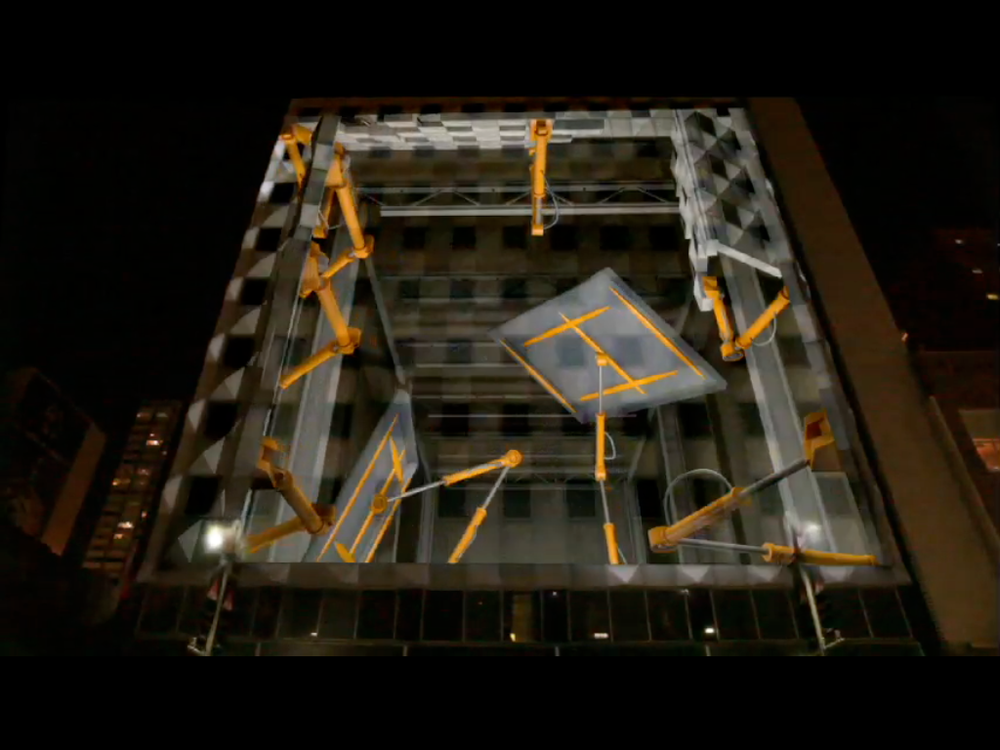In this article we will look at other types of installations and projections to see what other settings we can use as designers for immersive experiences.
Projection Mapping
Projection mapping is a 3D video projection technique using physical environments and objects as the surface for a projection, instead of a screen. Light, colors and oftentimes sound is used to outdraw a story with the edges of a building being the only boundaries for the scenery. Architectural elements, such as facades, are filled with life through precise lighting of the projection surface. The structure dissolves and the illusions take over. Houses bend or fall apart, 3D objects move in the direction of the audience.

AV Installations
Worth mentioning are Audio-Video Installations using giant or more smaller screens, showing videos or animations. They are often used in exhibitions and public places and are most times not interactive. But in the lobby of the Terrell Place in Washington DC there is an installation with motion-activated screens responding to the people going by.

Immersive Sensory Rooms
CAVE (Cave Automatic Virtual Environment) is a virtual reality environment consisting of a cube-shaped VR room you can enter. The walls, floors and ceilings are projection screens and with a VR headset, that is synchronized with the projectors, the user can walk around an image to study it from all angles. Sensors within the room track the viewer’s position to align the perspective correctly.

References:
Projection mapping https://www.barco.com/en/solutions/projection-mapping
Videomapping Projection https://www.visualimpression.de/en/3d-visualisierung/videomapping-projection/
Amazing Screen Installation http://www.fubiz.net/en/2016/07/30/amazing-screen-installation/
CAVE (Cave Automatic Virtual Environment) https://whatis.techtarget.com/definition/CAVE-Cave-Automatic-Virtual-Environment